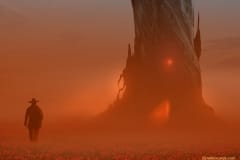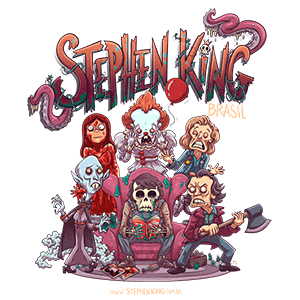Note. The page is still under development so not everything will work yet! We look forward to seeing you again soon.
Salem’s Lot is a gripping novel by Stephen King, first published in 1975, and it’s one of his most impactful works. The story is set in the small, seemingly quiet town of Jerusalem’s Lot (or “Salem’s Lot”) in Maine, where an unsettling evil begins to spread.
Here are some elements that make Salem’s Lot particularly compelling:
- Atmospheric Tension: King masterfully builds a creeping sense of dread as the town’s sinister undercurrents begin to surface. The atmosphere of the novel is both eerie and claustrophobic, making every detail feel like it’s shrouded in darkness.
- Unforgettable Villain: The novel features one of King’s most iconic antagonists, Kurt Barlow, a vampire who brings a reign of terror to the town. Barlow’s malevolent presence and the way he manipulates the residents is chilling and unforgettable.
- Deep Character Development: The story’s strength lies in its rich, multi-dimensional characters. The protagonist, Ben Mears, returns to his hometown only to find it plagued by dark forces. King delves deeply into the lives and fears of his characters, making their struggles and triumphs intensely relatable.
- Exploration of Evil: Salem’s Lot isn’t just a story about vampires; it’s an exploration of how evil can seep into the fabric of a community. The novel examines the nature of evil and its capacity to corrupt even the most ordinary lives.
- Atmospheric Setting: The town itself becomes a character in the story, with its old houses, deserted streets, and looming darkness contributing to the novel’s overall sense of foreboding. The setting is meticulously crafted to enhance the horror and suspense.
- Impactful Themes: The book explores themes of fear, isolation, and the loss of innocence. It addresses how people confront and overcome darkness, both literal and metaphorical, making it a powerful narrative about human resilience and courage.
Overall, Salem’s Lot is a masterclass in horror fiction, combining supernatural elements with psychological depth to create a story that resonates with fear and fascination long after the final page.
Book:
- Amazon: Available in hardcover, paperback, and e-book formats.
- Barnes & Noble: Offers the book in physical and digital formats.
- Books-A-Million: Carries the novel in various editions.
- Local Bookstores: Check with independent bookstores or major chains.
- eBay: You might find used or rare editions.
Film:
1979 Miniseries:
- Amazon: Available for purchase or rental in DVD and Blu-ray formats.
- eBay: Often has used copies available.
- Streaming Services: May be available for rental or purchase on platforms like Google Play and iTunes.
2004 Miniseries:
- Amazon: Available in DVD format.
- eBay: May have used copies for sale.
- Streaming Services: Check platforms like Google Play or iTunes for rental or purchase options.
2023 Film:
- Amazon: Check for availability in DVD, Blu-ray, or digital formats once released.
- eBay: Look for upcoming listings.
- Streaming Services: Availability will depend on distribution and may be offered on major platforms like Netflix, Hulu, or HBO Max.
For the most current availability and pricing, it’s a good idea to check these sites or visit local retailers.
Film Adaptations and Remakes:
- Salem’s Lot (1979)
- Description: A television miniseries directed by Tobe Hooper. It stars David Soul as Ben Mears and is known for its atmospheric and chilling adaptation of Stephen King’s novel.
- Salem’s Lot (2004)
- Description: A television miniseries directed by Mikael Salomon, featuring Rob Lowe as Ben Mears. This adaptation is a modern retelling of the story and differs from the 1979 version in style and execution.
- Salem’s Lot (2023)
- Description: A feature film adaptation directed by Gary Dauberman, which is intended to provide a contemporary take on the classic story. This adaptation is part of the ongoing trend to revisit classic horror stories for modern audiences.
Each adaptation offers a different interpretation of King’s novel, reflecting various styles and eras of filmmaking while staying true to the core themes of the original story.













